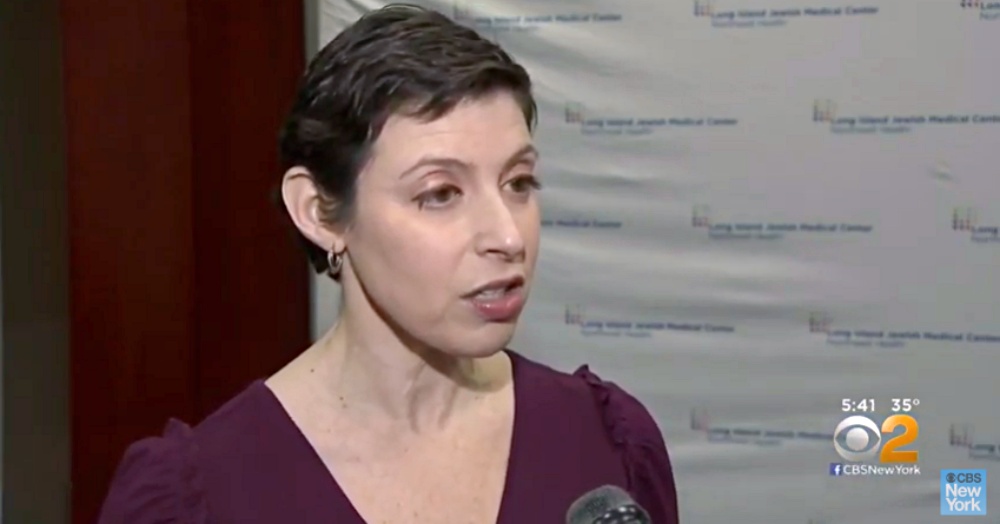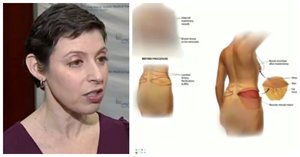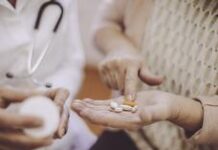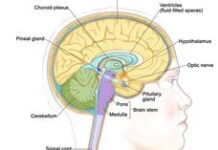When she was just 46 years old, Stacey Dunn found out she had breast cancer, as well as a BRCA gene mutation. She underwent a double mastectomy to reduce her risk of the cancer coming back.When it came to reconstruction, she was able to get a procedure that is quite rare: surgeons used tissue from her love handles to reconstruct her breast tissue.Women generally have a few options when it comes to reconstruction. They can get silicone or saline implants, they can use tissue from another area for their body for “natural” reconstruction (called a flap procedure), or they can forgo reconstruction completely. Photo: YouTube/CBS New York
Photo: YouTube/CBS New York
Flap surgery is the most complex option for women seeking reconstruction. Surgeons typically remove skin, fat, and sometimes muscle from the belly area (either a TRAM, DIEP, or SIEA flap, depending on what tissues and blood vessels are being removed). Other types of flap procedures take tissue from the back (latissimus dorsi flap), the butt (gluteal flap), or the inner thigh (TUG).The type of flap procedure a woman undergoes will depend on how much excess tissue is available, the size of reconstructed breasts she wants, her health, and the availability of different procedures in her area. Photo: YouTube/CBS New York
Photo: YouTube/CBS New York
Dunn knew she wanted to do a flap procedure, but she was slim and didn’t have enough belly fat to go the most common route.So her doctors, Dr. Neil Tanna and Dr. Mark Smith, opted to take tissue from her love handles. They removed fat and skin from the area and transplanted it into her chest, a process that took 11 hours with both surgeons working the entire time. Photo: YouTube/CBS New York
Photo: YouTube/CBS New York
The biggest challenge was keeping the tissue alive. The surgeons had to find blood vessels in the chest to connect with the tissue from her love handles and then sew them together. The blood vessel connections were about the size of one millimeter, which is thinner than pencil lead, and required microsurgical suturing.The surgery is much more complicated than surgery using implants, and comes with longer healing times and more risks. But a major upside is that these implants will not need to be replaced, and they can feel more natural. Photo: YouTube/CBS New YorkLearn more in this video.Proper BCS greatergood_ctg_abovevideoSource
Photo: YouTube/CBS New YorkLearn more in this video.Proper BCS greatergood_ctg_abovevideoSource







